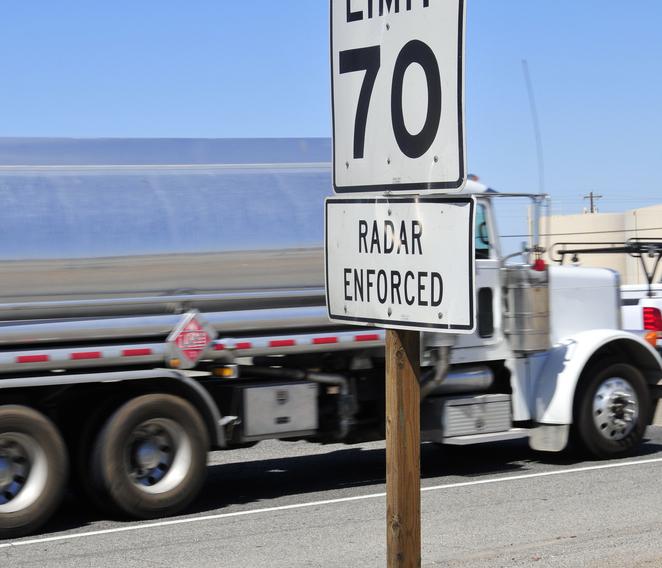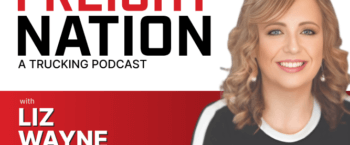Accelerate Carrier Onboarding Without Cutting Corners

When it comes to your freight brokering business, what keeps you up at night? Is it finding qualified capacity so you can cover more loads and increase your profitability? Given today’s exceedingly tight capacity and ongoing carrier shortage, it’s no wonder.
Simplify carrier onboarding
Onboard compliant carriers right from your TMS.
According to ATA, the trucking industry today needs more than 1.1 million new drivers in the next ten years. And their chief economist worries the shortage of qualified drivers could rise to more than 100,000 by 2023 if things don’t change. Add to that challenge the importance of establishing compliance standards that help protect your business, and you’ve got your work cut out for you.
Accidents, thefts, and losses are an unfortunate reality in the freight industry. To mitigate business risk and protect your reputation as well as your relationships, taking proactive steps will ease your mind and assure your shippers you take carrier compliance and safety seriously.
How to move more freight in record time while better protecting your business
Since there is no government mandated hiring standard for carrier compliance, it’s up to you to set the standards for the carriers you allow into your network. While those standards are determined on the broker level, they should, at minimum, ensure your carriers have appropriate legal authority to operate in intrastate or interstate commerce; are who they say they are and have the documentation to prove it; have a current certificate of insurance on file with the FMCSA; have a safety rating that meets your comfort level; don’t have a complaint report filed against them.
But checking compliance at the time of
onboarding is only the first step. Ongoing monitoring is also essential, as
carrier status can change at any time—and often. In fact, here’s how frequently
the following categories of compliance can change:
- FMCSA rating – Typically changes monthly, but safety ratings might be updated more often
- DOT status – Daily
- MC – Daily
- Out of service designations – Daily
- FMCSA insurance registration – Daily
You should also have a system in place that identifies fraud and prevents fraudulent parties from registering to haul your loads.
These are just the basics. But an all-encompassing, well-thought-out compliance program will not only make you a better partner to your shippers, it will ensure consistency across your organization when it comes to managing risk.
Compliance Pain Points:
- No mandated carrier hiring standards exist, so brokers must create their own.
- Manually validating specific carrier requirements is time-consuming and costly.
- Carrier safety records can change, even during the middle of a haul.
- Safety and insurance updates can get overlooked with manual monitoring.
- Manual data recording is prone to inaccuracies.
- Delays in onboarding process can result in lost opportunities.
While it’s true there are no federally mandated compliance requirements for carriers, the FMCSA Compliance Safety and Accountability (CSA) program, in recognition of the need for more universal standards, established seven areas they use to score compliance. The higher a carrier’s CSA score, the better their record and reputation. You can use carrier CSA scores to assess carrier information to help you determine if they meet your standards and your risk tolerance. If you rely on a load board to source carriers, look for one that gives you easy access to CSA scores.
CSA scoring areas:

- Unsafe driving: This includes dangerous activities such as speeding, improper lane changes, seat belt violations, and more. These violations impact the Safety Measurement System results for 24 months.
- Crashes: This data includes all state-reported crashes.
- Hours of service (HOS) compliance: Drivers must comply with DOT regulations and not engage in impaired or fatigued driving.
- Vehicle maintenance: This ensure that vehicles adhere to all maintenance schedules to ensure they are safe to operate.
- Controlled substances/alcohol: Drunk or impaired driving involving drugs, alcohol, or misuse of prescription drugs causes companies to lose points and is usually a zero-tolerance infraction for individual carriers.
- Hazardous materials compliance: Carriers are rated on the safe or unsafe handling of hazardous materials.
- Driver fitness: Carriers must be trained, licensed, and able to operate their equipment safely and with professionalism.
Carrier Sourcing
Now that we’ve established the importance of compliance, let’s take a deeper dive into carrier sourcing. No one knows better than you how time-consuming the process can be, especially considering the current capacity shortage happening across the country today. A strategic and proactive approach is the smartest, so you don’t find yourself missing opportunities time after time. Brokers who don’t plan now to address the complex capacity issue and look for ways to expand their carrier networks will get left in the dust.
Even in times of plenty, continually growing your carrier network boosts your load capacity (and your monthly income). When the market is pinched, though, as it is for the foreseeable future, growing your carrier network fast becomes even more critical. Without enough capacity to go around, the best way for freight brokers to survive and thrive is to carve out the biggest possible share of available capacity. Your shippers need to know that they can count on you to get the goods where they need to go, which means getting them onto an available truck with a driver quickly and at a competitive rate. Having good relationships with a wide net of carriers can help bump you to the front of their line so they’ll prioritize your loads whenever possible.
The good news is: When it comes to sourcing new carriers, you have options. For the best results, consider leveraging several:
1. Use broker load boards.

Load boards are among the best tools for new carrier sourcing. A good load board will help you find new capacity quickly. Load boards are an excellent place to cultivate long-term relationships with carriers. Build value into every negotiation with a new carrier by offering fair rates and terms, as well as accurate load information, and always let them know that you’re open to working together again.
2. Search carrier directories.
A carrier directory is a good place to search for carriers who are trustworthy and experienced. Unlike a load board, which is primarily designed to quickly move freight, a carrier directory is a place to look for carriers in anticipation of your future needs. Once you find potential matches, you can reach out to those carriers to see if they’re actively seeking new freight broker partnerships.
3. Use digital freight matching tools.
Digital freight matching tools automate much of the matching process. Rather than manually searching through postings and reading replies to your own posts, you can set up automated rules to find potential matches. You can even manage and automate risk assessment with carrier monitoring. Set up notifications to alert you if a carrier on your list changes authority status or receives a negative inspection report.
4. Search FMCSA data.
The FMCSA maintains a searchable database of active carriers. However, sourcing carriers this way can be a needle-in-a-haystack situation. The database doesn’t go into many details that freight brokers need to determine if a particular carrier is right for them. Some of the information might also be outdated or wrong. Still, if you’re looking to add carriers to your network, it can’t hurt to try. Just don’t rely on this as your sole sourcing method.
5. Build a referral network.

Referral networks, while not always a predictable revenue stream, are always helpful. If you like and trust the carriers you work with, chances are you’ll be happy with any connections they send to you. Consistently being honest, transparent, and ethical in your dealings makes it highly likely that your connections will say yes if you ask them for referrals.
In your quest to grow your network, you still need to apply due diligence when hiring new carriers. Rapid industry growth and the variety of shipping options increase the number of carriers that might not be in compliance. While it might be tempting to onboard someone who might not check all your compliance boxes, resist the urge to use a non-compliant carrier. You are not only putting your business at risk, you are also risking your relationships and your reputation. An accident or mishap that could have been prevented with proper onboarding and monitoring leaves your brokerage vulnerable on many levels.
Compliance-as-a-Service (CaaS) for the freight industry
Most people in business settings have heard of Software-as-a-Service (SaaS), a method of software delivery that allows data to be connected to any device with an internet connection and a web browser. From massive corporations to tiny mom and pop shops, this cloud-based software is the default deployment for nearly every type of business technology in the world today. A load board is, in fact, a SaaS system.
Simplify carrier onboarding
Onboard compliant carriers right from your TMS.
As the freight industry faces unprecedented growth and you as a broker are faced with new challenges, specifically rapidly sourcing compliant carriers to cover your loads, it’s time to think about a new approach: Compliance-as-a-Service (CaaS). CaaS for the freight industry was designed to solve could many of the sourcing and compliance issues brokers face today. Here’s what an ideal CaaS solution could do:
- Give brokers the tools they need to evaluate carriers for safety, industry, and financial requirements—right from their TMS.
- Automate manual hiring tasks, including sourcing, onboarding, and monitoring for compliance.
- Go beyond products and services to deliver an end-to-end solution, including access to industry compliance experts.
- Provide a paperless carrier selection and registration experience, enabling you to seamlessly add carriers with a few clicks.
- Help you quickly onboard approved carriers and grow your network with confidence.
- Deliver built-in onboarding and monitoring tools that reduce expenses and minimize the time-consuming tasks of manually researching carriers, validating insurance, and monitoring ongoing compliance.
- Move more freight faster and make a profit while better protecting your business against risk.
In summary, when it comes to sourcing carriers and reducing risk, don’t take shortcuts. And since speed is what will drive you ahead, look for innovation, automation, and advanced technology that uses machine learning and delivers high-quality data to guide some of your most critical business decisions: who to hire, how to onboard, and how to keep your business safer.
Check out CaaS for the freight industry, now delivered by Truckstop.
Topics:

Find out how our platform gives you the visibility you need to get more done.
Get helpful content delivered to your inbox.
Schedule a demo.
Find out how our platform gives you the visibility you need to get more done.





